
Bahamut Lagoon is a 1996 tactical role-playing game developed and published by Square for the Super Famicom.
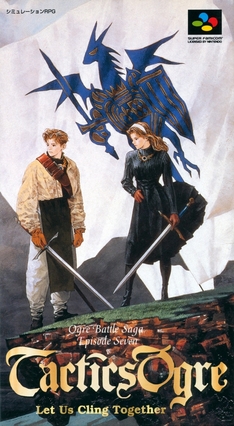
Tactics Ogre: Let Us Cling Together is a 1995 tactical role-playing game developed and published by Quest Corporation for the Super Famicom. It was later ported to the Sega Saturn (1996) and the PlayStation (1997), the latter released in North America in 1998 by Atlus USA. The second entry in the Ogre Battle series, the story takes place in the war-torn kingdom of Valeria, where protagonist Denim Powell works in a local resistance force against occupying powers, ending up caught in the ethnic conflicts driving the war. Battles are turn-based, taking place on grid-based maps from an overhead perspective with a focus on positioning and using character class abilities.
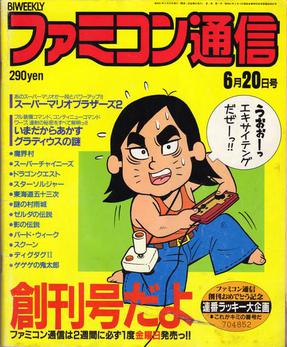
Famitsu, formerly Famicom Tsūshin, is a line of Japanese video game magazines published by Kadokawa Game Linkage, a subsidiary of Kadokawa. Famitsu is published in both weekly and monthly formats as well as in the form of special topical issues devoted to only one console, video game company, or other theme. Shūkan Famitsū, the original Famitsu publication, is considered the most widely read and respected video game news magazine in Japan. From October 28, 2011, the company began releasing the digital version of the magazine exclusively on BookWalker weekly.

Live A Live is a 1994 role-playing video game developed and published by Square for the Super Famicom. A remake was published by Square Enix in Japan and Nintendo worldwide, releasing first for Nintendo Switch in 2022, and the following year for PlayStation 4, PlayStation 5, and Windows. The game follows seven distinct scenarios scattered across different time periods, with two more unlockable scenarios linking the narratives together through the recurring antagonist Odio. Gameplay is split between exploration with story-specific twists, and turn-based combat played out on a grid.

Ardy Lightfoot is a platform game released on the Super Nintendo Entertainment System in 1993 in Japan and 1994 in the west. It was developed by ASCII and published by Titus France in North America and Europe.
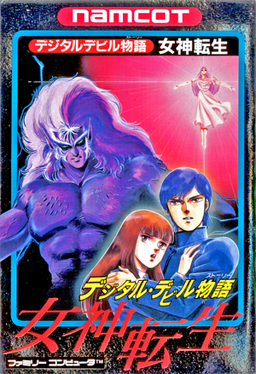
Digital Devil Story: Megami Tensei refers to two distinct role-playing video games based on a trilogy of science fantasy novels by Japanese author Aya Nishitani. One version was developed by Atlus and published by Namco in 1987 for the Famicom—Atlus would go on to create further games in the Megami Tensei franchise. A separate version for personal computers was developed and published by Telenet Japan with assistance from Atlus during the same year.

Treasure Hunter G is 1996 a turn-based tactical role-playing game developed by Sting Entertainment and published by Square exclusively for the Super Famicom, and in Japan.
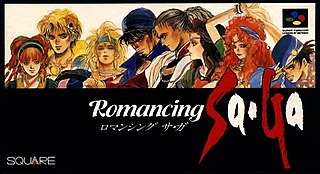
Romancing SaGa is a 1992 role-playing video game developed and published by Square for the Super Famicom. It is the fourth entry in the SaGa series. It was subsequently released for the WonderSwan Color in 2001 and mobile phones in 2009. A remake for the PlayStation 2, subtitled Minstrel Song in Japan, was released in both Japan and North America in 2005 by Square Enix. A remaster of Minstrel Song was released worldwide in 2022 for Android, iOS, Nintendo Switch, PlayStation 4, PlayStation 5 and Windows.

Final Fantasy Legend III, known in Japan as SaGa 3: Jikuu no Hasha, is a role-playing video game developed and published by Square for the Game Boy. The third entry in the SaGa series, it was released in Japan in 1991 and in North America in 1993. A remake for the Nintendo DS was released in 2011 by Square Enix, remaining exclusive to Japan. The Game Boy version was later ported to the Nintendo Switch and released worldwide by Square Enix in 2020, with later ports to Android, iOS and Microsoft Windows in 2021.

Romancing SaGa 2 is a 1993 role-playing video game developed and published by Square for the Super Famicom. It is the fifth entry in the SaGa series. It received an expanded port for Japanese mobile devices from Square Enix in 2011. This version was remastered by ArtePiazza and released worldwide between 2016 and 2017 by Square Enix for Android, iOS, PlayStation Vita, Nintendo Switch, PlayStation 4, Windows and Xbox One.
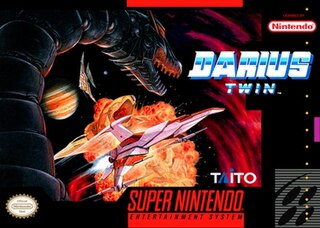
Darius Twin is a 1991 horizontal-scrolling shooter video game developed and published by Taito for the Super Nintendo Entertainment System. It is part of the Darius series. It was re-released on the Wii Virtual Console in 2010 for Japan on April 13 and for North America on December 13.
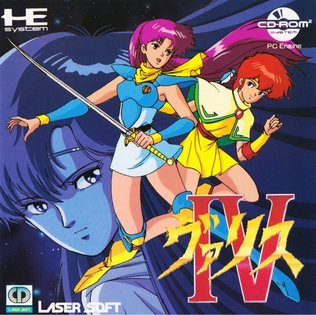
Valis IV is a 1991 action-platform video game originally developed by Laser Soft and published by Telenet Japan for the PC Engine CD-ROM². A vastly different version titled Super Valis IV was published in Japan by Telenet in 1992 and in North America by Atlus Software in 1993 for the Super Nintendo Entertainment System. It is the fourth and final main entry in the eponymous series. Following on the events of Valis III, Yuko became a goddess and has watched over Vecanti since Glames' defeat. The dark world prince Galgear, who lost self-control after acquiring a magical ring, broke from his fifteen-year imprisonment by the gods of Vecanti, kidnapping Valna and being pursued by troops led by Cham. Lena, a member of Cham's band, is joined by her sister Amu and the prince's father Asfal on a journey to retrieve the titular sword and defeat Galgear.
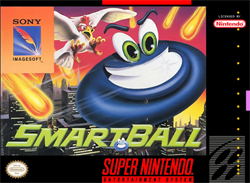
Smart Ball is a platform game developed by Game Freak and System Sacom. It was published by Epic/Sony Records and Sony Imagesoft for the Super Nintendo Entertainment System in 1991. A sequel titled Jerry Boy 2 was in production, but was not released.
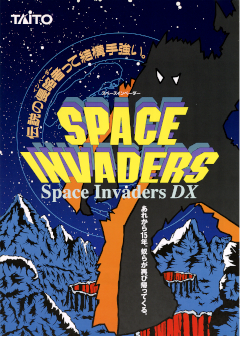
Space Invaders DX is a 1993 fixed shooter arcade game developed and published in Japan by Taito. It has been re-released for several consoles since, including the Super Nintendo Entertainment System, PC Engine Super CD, and Sega Saturn — several of these conversions use the name Space Invaders: The Original Game. The player assumes control of a laser base that must fend off waves of incoming enemies, who march down in formation towards the bottom of the screen. It is the fifth entry in the long-running Space Invaders series. DX contains four variations of the original Space Invaders, in addition to a multiplayer mode and a "Parody Mode" that replaces the characters with those from other Taito franchises. Home ports of DX received mixed reviews for their high price point and general lack of content.
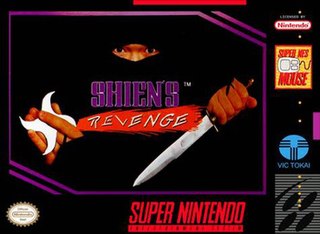
Shien's Revenge is a 1994 rail shooter video game developed by Almanic Corporation and originally published by Dynamic Planning for the Super Nintendo Entertainment System in Japan and later in North America by Vic Tokai. In the game, players assume the role of the titular ninja to fight against monsters coming from a time portal in order to face against an entity known as Undertaker and rescue his companion Aska. Co-designed by Takashi Shichijo and mangaka Go Nagai, the title was created by most of the same team that worked on previous projects at Almanic such as E.V.O.: Search for Eden. It was met with mixed reception from critics since its release.

Psycho Dream is a platform game developed and published by Riot for the Super Famicom and released in 1992. Riot was a division of Telenet Japan.

Sailor Moon is a side-scrolling beat 'em up video game originally developed and released by Angel in Japan on August 27, 1993 and later in France and Spain in November 1994 by Bandai for the Super Nintendo Entertainment System. It is the second game to be created by Angel based upon Naoko Takeuchi's Sailor Moon shōjo manga and anime series, the first for the Super NES and one of the few Sailor Moon titles that had an official international release.

Dragon Ball Z: Super Butōden, known as Dragon Ball Z in Europe, is a 1993 fighting video game developed by Tose and published by Bandai for the Super Nintendo Entertainment System. It is based upon Akira Toriyama's Dragon Ball franchise, and was its first fighting game.
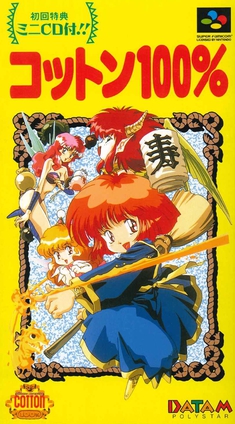
Cotton 100% is a 1994 scrolling shooter video game developed by Success and originally published by Datam Polystar for the Super Famicom. The second installment in the Cotton franchise, it is a follow-up to Cotton: Fantastic Night Dreams. In the game, players assume the role of the titular young witch who, alongside her fairy companion Silk, sets out on her broomstick on a quest to defeat several monsters and get her Willow candy. Its gameplay is similar to the first game, mainly consisting of shooting mixed with role-playing game-esque elements using a main four-button configuration.
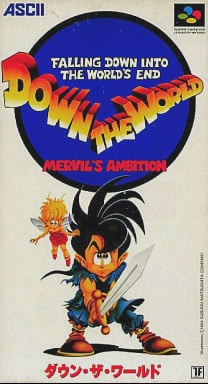
Down the World: Mervil's Ambition is a role-playing video game (RPG) developed and published by ASCII Corporation for the Super Famicom. The plot follows the knight Gao, tasked with accompanying a hero in rescuing an ailing princess and preventing the end of all life.





















